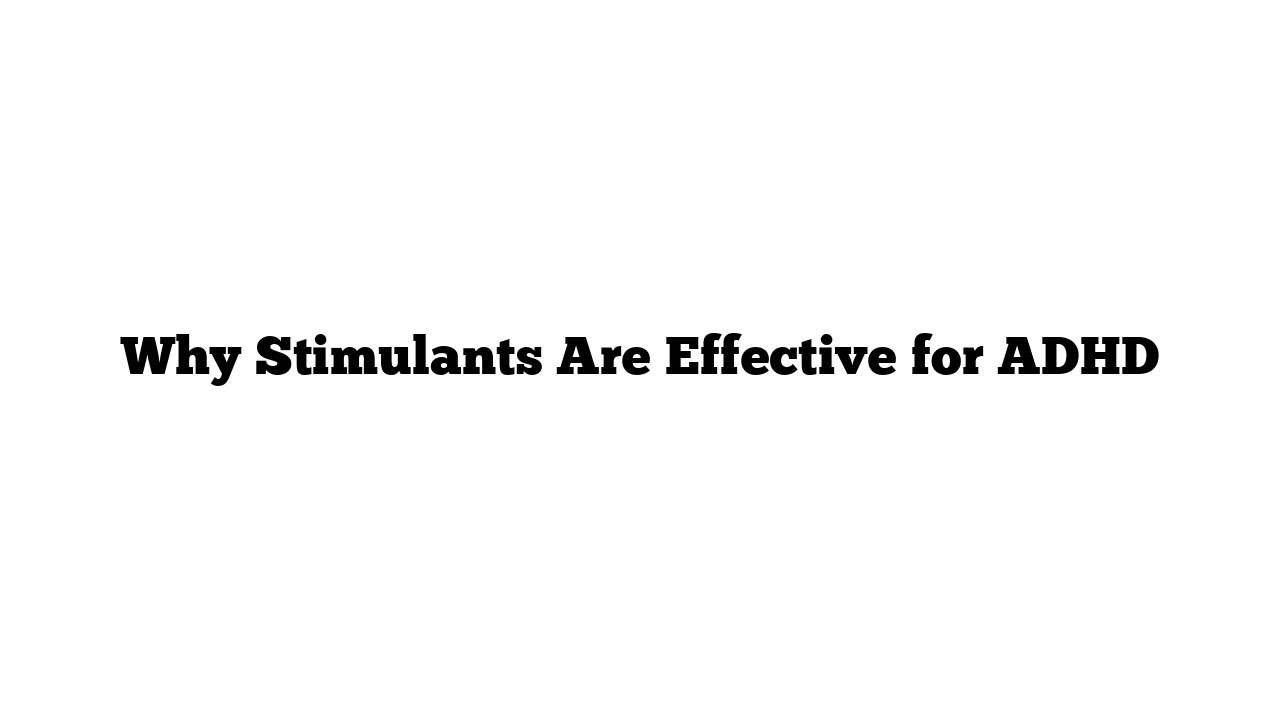You may have heard of medications like Ritalin and Adderall. These are stimulants frequently prescribed to treat Attention Deficit Hyperactivity Disorder (ADHD). At first glance, it seems counterintuitive to give stimulants to individuals who struggle with hyperactivity. If someone can’t sit still, why would adding more energy help? As a doctor, I want to clarify how these medications work and why they can be effective for those with ADHD.
Understanding ADHD and Its Symptoms
ADHD manifests differently in each person, but the symptoms primarily revolve around executive functions. These functions include mental processes that enable us to organize tasks, manage time, control impulses, and retain information. Individuals with ADHD often struggle with these abilities, leading to challenges in their daily lives.
The Role of Brain Chemistry
Research suggests that ADHD is associated with a chemical imbalance in the brain, particularly involving dopamine—a neurotransmitter linked to pleasure and reward responses. The concept of the low arousal theory is central to understanding this condition. This theory posits that people with ADHD have chronically underaroused brains, leading to lower activity in certain brain regions.
Dopamine Levels and Their Effects
When brain activity is low, it means that neurons may not be firing as often as they should, and neurotransmitters like dopamine aren’t flowing properly. This deficiency causes individuals to seek out new stimulation in their environment, which can be perceived as hyperactivity or inattention.
- Tonic Dopamine: This is the baseline level of dopamine present between neurons. A low tonic level means individuals with ADHD require significantly more stimulation to achieve the same level of dopamine flow as those without the disorder.
- Phasic Dopamine: This refers to dopamine released in response to specific stimuli. In people with ADHD, phasic responses are typically more pronounced due to the lower tonic dopamine levels.
The imbalance can create an urge to drop what you’re doing to explore new stimuli, resulting in distractions and impulsive behavior.
How Stimulants Work
Stimulants like Ritalin (methylphenidate) and Adderall (amphetamines) help by increasing dopamine levels in the brain. Here’s how they function:
- Methylphenidate: This medication is a dopamine reuptake inhibitor. It prevents neurons from quickly reabsorbing dopamine, allowing more dopamine to remain between the cells.
- Amphetamines: These drugs work differently by stimulating neurons to release more dopamine.
Both types of stimulants increase tonic dopamine levels, creating a more balanced environment similar to that of a typical brain. This results in heightened arousal, which decreases the need for constant external stimulation.
Benefits of Stimulant Medications
For many diagnosed with ADHD, these medications lead to:
- Improved focus and attention
- Better impulse control
- Enhanced ability to manage time and tasks
Although there are alternative treatment options, they are often less effective than stimulants.
Risks of Recreational Use
It’s important to note that stimulant medications can be misused, often recreationally, to enhance studying or achieve a euphoric high. However, this practice is dangerous and can lead to addiction.
- Side Effects: Common side effects include trouble sleeping, increased heart rate, and anxiety.
- For Those Without ADHD: Taking these medications may not provide cognitive benefits and could lead to unpleasant side effects. Research suggests that while some individuals without ADHD report improved performance, these benefits are often minimal and may stem from a placebo effect.
In Summary
Stimulant medications work for ADHD by addressing the underlying chemical imbalances in the brain that affect focus and executive functions. It’s not about giving individuals more energy; instead, it’s about achieving a state of balance that allows for improved concentration and organization. For those without ADHD, the potential risks and side effects outweigh any perceived benefits.
To learn more about how psychiatric drugs impact the brain, feel free to visit medicaltimes.io for further articles and insights!
References
By understanding the complexities of ADHD and the role stimulants play, we can foster a more informed discussion around treatment options and their effectiveness.
